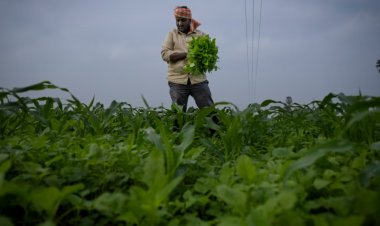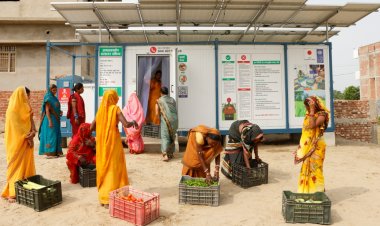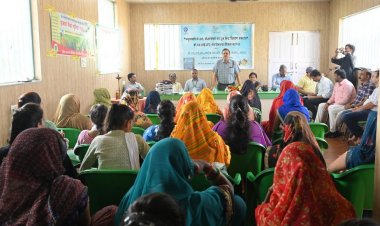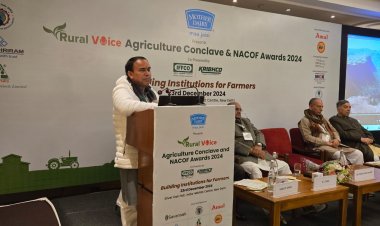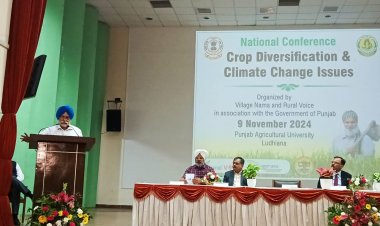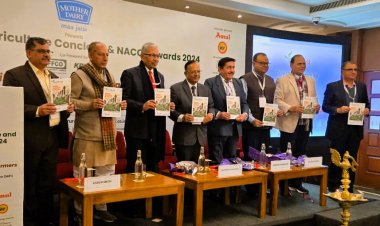Sanjeevani Budget for agriculture and cooperatives in Amrit Kaal
This year’s Budget has planted the seeds of a shift in the approach at a fundamental level. It talks about the empowerment of citizens as well as their inclusive development, and contains measures for improving mobility and connectivity, productivity enhancement, and investment. Instead of adopting the typical approach laying a route heavily dependent on subsidies and intervention through government schemes, it emphasizes harnessing and conserving the natural resources and advocates for the practice of natural and organic methods for farming.
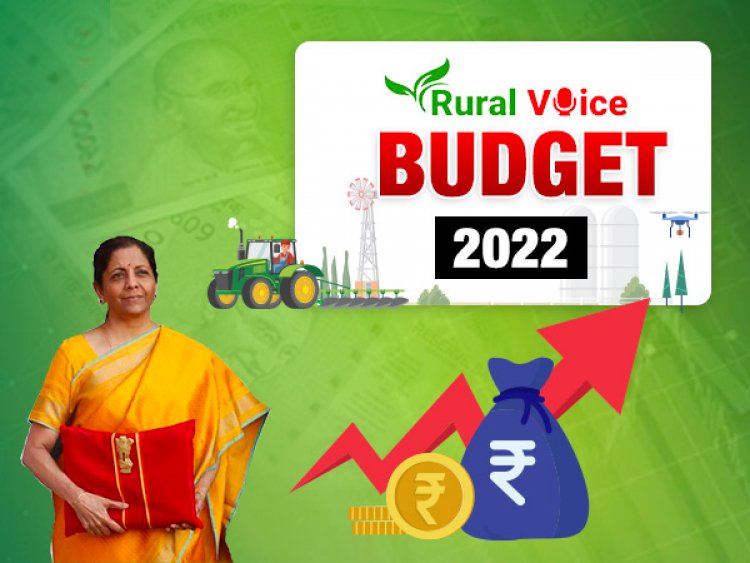
The most important and unique feature of Union Budget 2022-23 is that it seeks to lay the foundation of the economy over the Amrit Kaal — while setting its foot on India@75, it keeps its vision on India@100. It has taken care of the challenges that India is facing today and what is needed to address these challenges. Yet, it has gone beyond the present to lay a solid foundation and clear road map for making India a global superpower in another 25 years. A smart balancing of short-term requirements with a long-term sustainable and inclusive growth path is the hallmark of this Budget. Finance Minister Nirmala Sitharaman deserves all praises for such a smart, focussed and balanced budget.
Regarding the agriculture and cooperative sectors, a paradigm shift in approach is clearly visible in the Budget. Instead of announcing some big-ticket populist measures or interventions, which was expected by many considering the forthcoming Assembly elections, the Finance Minister chose the inclusive, investment and tech-focussed route to take the farm sector to a higher growth trajectory.
It is an established fact that Indian agriculture is punctured with low productivity and a low rate of return on investment. As a result, the country is facing the problem of Ashrit Krishi (dependent agriculture), where the farmers have become accustomed to looking up to the government to find the solution to every little trouble. The truth is that the solution to the problem lies in the hands of farmers themselves, and for this to happen the country has to move towards AtmaNirbhar Krishi (self-reliant agriculture).
The Indian agriculture landscape is characterized by the dominance of small and marginal farmers having very small size of landholdings. Around 70 per cent of the farmers in the country have less income than the expenditure they incur for undertaking farm operations. Farming is unviable for the small and uneconomical size of landholdings because it cannot sustain any investment. The panacea lies in the aggregation and collectivization of land and other productive assets.
This year’s Budget has planted the seeds of such a shift in the approach at a fundamental level. It talks about the empowerment of citizens as well as their inclusive development, and contains measures for improving mobility and connectivity, productivity enhancement, and investment. Instead of adopting the typical approach laying a route heavily dependent on subsidies and intervention through government schemes, it emphasizes harnessing and conserving the natural resources, and advocates for the practice of natural and organic methods for farming.
Such a shift towards natural, organic farming will have monumental consequences towards reducing the cost of cultivation and improving farmer income. Further, this will also promote seamless and integrated economic utilization of farm and animal waste by converting them to natural and organic nutrients for soil and crops. The production units for the natural and organic soil and crop nutrients may be established at the community level so that natural and organic farming may be facilitated on a cluster basis in order to achieve economies of scale and better supply chain management. Establishing appropriate knowledge connectivity, efficient supply chain system and market linkage are extremely crucial to remunerative farming. This focus is clearly visible in Budget 2022-23, as it has announced measures and made provisions for creating the required eco-system by bringing together the government, corporates, and the agriculture university system.
What is even more remarkable is the departure from the past visible in the evident focus and emphasis of keeping at the centre the farmer, who will and should rightfully be the drivers of the agenda for all things agriculture in the future. However, to be able to drive the agenda and derive benefits, the farmers have to transform to the collective mode. The collective mode of farming will be a necessity and not a matter of choice in future. Without adopting the collective mode, a large number of farmers will be forced to move out of agriculture in India, and India clearly cannot afford such a situation. This year’s Budget has made steps keeping in mind the grave potential problem enumerated above. It proposes to create a dedicated fund with the NABARD to finance agri start-ups, and facilitate custom hiring and the introduction of technology, including IT, in the agriculture sector.
The collective mode of farming, i.e., cooperatives, FPOs, SHGs etc., is the most suitable at the institutional level if a sustainable, viable and profitable farming system is the end-goal. Commensurate with this realization, the Budget has announced measures to keep alive and strengthen the ‘cooperative spirit’ in the country. The maiden budgetary allocation for the newly formed Ministry of Cooperation is Rs 900 crore, which is almost nine times the allocation made for the cooperative sector in the previous Union Budgets. The Budget has announced a level playing field between corporate and cooperatives in the matter of payment of Alternate Minimum Tax by reducing it from the present level of 18.5 per cent to 15 per cent. It has also been announced to reduce the surcharge from 12 per cent to 7 per cent for cooperative societies having income between Rs 1 crore and Rs 10 crore.
The Budget has recognized the importance of education and training for improving the functioning of cooperative institutions, and a separate budget provision has been made in this direction. The importance of digitization has been acutely recognized for improving efficiency, profitability, transparency and accountability in the functioning of PACS, and commensurate with this, an allocation of a significant amount of Rs 350 crore for the digitization of PACS has been made in the Budget. Alongside, an amount of Rs 274 crore has been allocated for an umbrella scheme “prosperity through cooperatives”, which will have a number of sub-components with the aim to achieve all-round development of cooperatives in the country. Also noteworthy is also the introduction of a ‘Credit Guarantee Fund for Cooperatives’, which has been set up with an objective to ensure adequate financial support for the cooperatives in the country.
In conclusion, the Union Budget 2022-23 may indeed be the harbinger of potential and much-needed revolutionary transformation in the agricultural landscape of India, perhaps for the first time emphasizing farmer development through collective actions that generate income and profit, instead of the age-old tradition of mitigating agricultural crisis through subsidies and transfer payment mechanism, which cannot continue for perpetuity. It may not be an overstatement to consider that perhaps for the first time the budget has made significant steps towards laying the groundwork for truly circumventing the agrarian crisis at an ideological level, by focussing on sound practices from first principles, instead of retroactive damage control. If the intents and announcement of Budget 2022-23 reach the ground the way it has been envisaged, India will have a better and prosperous rural and agriculture sector which will gainfully engage the majority of the population in a very productive and positive fashion, which will have long-term consequences for the alleviation of rural poverty and distress.
(Dr DN Thakur is President, Sahakar Bharti. The views expressed here are his own.)



 Join the RuralVoice whatsapp group
Join the RuralVoice whatsapp group


















